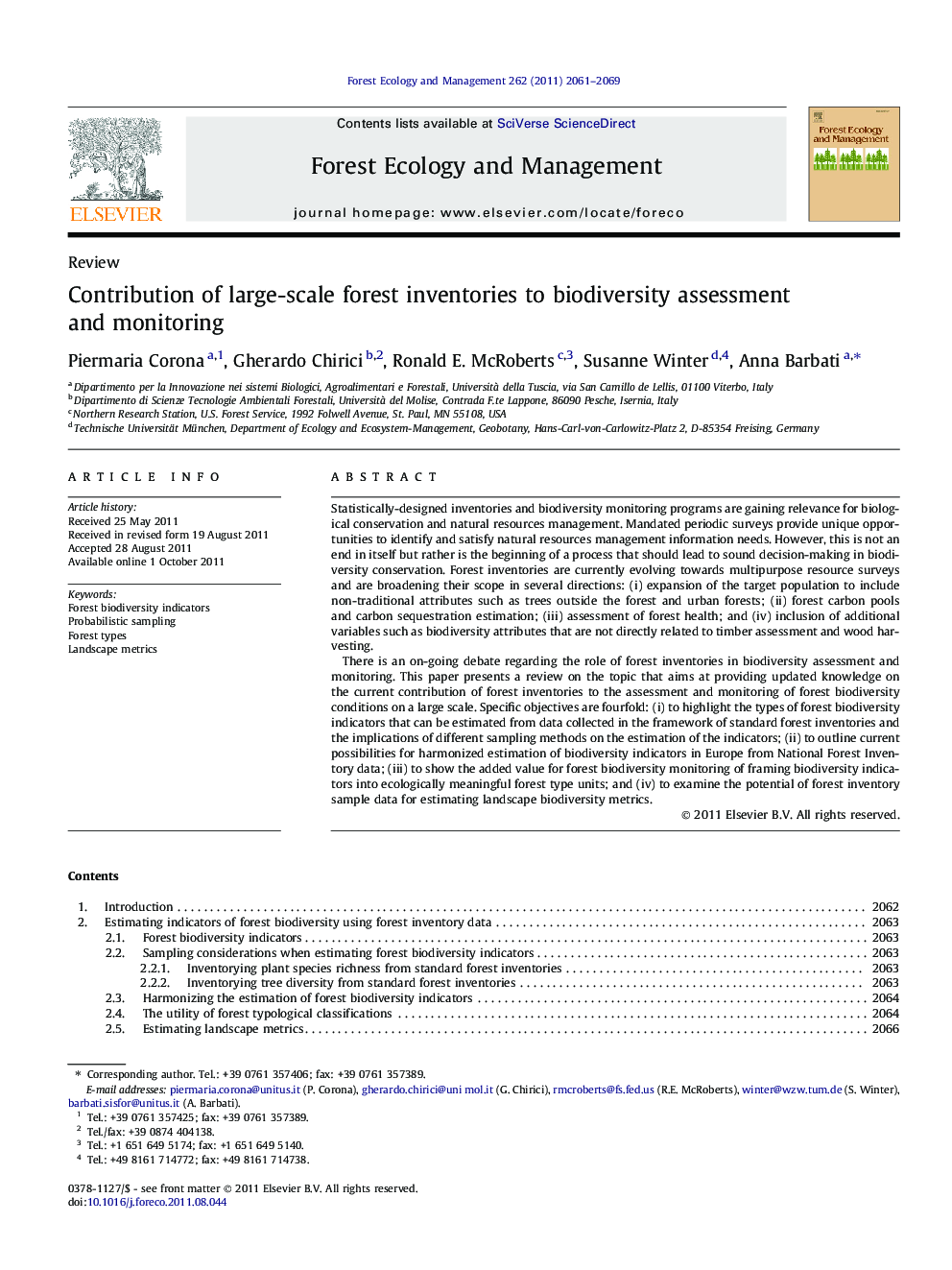| Article ID | Journal | Published Year | Pages | File Type |
|---|---|---|---|---|
| 87920 | Forest Ecology and Management | 2011 | 9 Pages |
Statistically-designed inventories and biodiversity monitoring programs are gaining relevance for biological conservation and natural resources management. Mandated periodic surveys provide unique opportunities to identify and satisfy natural resources management information needs. However, this is not an end in itself but rather is the beginning of a process that should lead to sound decision-making in biodiversity conservation. Forest inventories are currently evolving towards multipurpose resource surveys and are broadening their scope in several directions: (i) expansion of the target population to include non-traditional attributes such as trees outside the forest and urban forests; (ii) forest carbon pools and carbon sequestration estimation; (iii) assessment of forest health; and (iv) inclusion of additional variables such as biodiversity attributes that are not directly related to timber assessment and wood harvesting.There is an on-going debate regarding the role of forest inventories in biodiversity assessment and monitoring. This paper presents a review on the topic that aims at providing updated knowledge on the current contribution of forest inventories to the assessment and monitoring of forest biodiversity conditions on a large scale. Specific objectives are fourfold: (i) to highlight the types of forest biodiversity indicators that can be estimated from data collected in the framework of standard forest inventories and the implications of different sampling methods on the estimation of the indicators; (ii) to outline current possibilities for harmonized estimation of biodiversity indicators in Europe from National Forest Inventory data; (iii) to show the added value for forest biodiversity monitoring of framing biodiversity indicators into ecologically meaningful forest type units; and (iv) to examine the potential of forest inventory sample data for estimating landscape biodiversity metrics.
► Forest inventories do contribute to forest biodiversity monitoring over large areas. ► Tree-related compositional and structural indicators can be reliably estimated. ► Different survey techniques affect the estimation of diversity indicators. ► Biodiversity indicators information value is enhanced when reported by forest types. ► Forest habitat landscape pattern metrics can be quantified using sample-based data.
